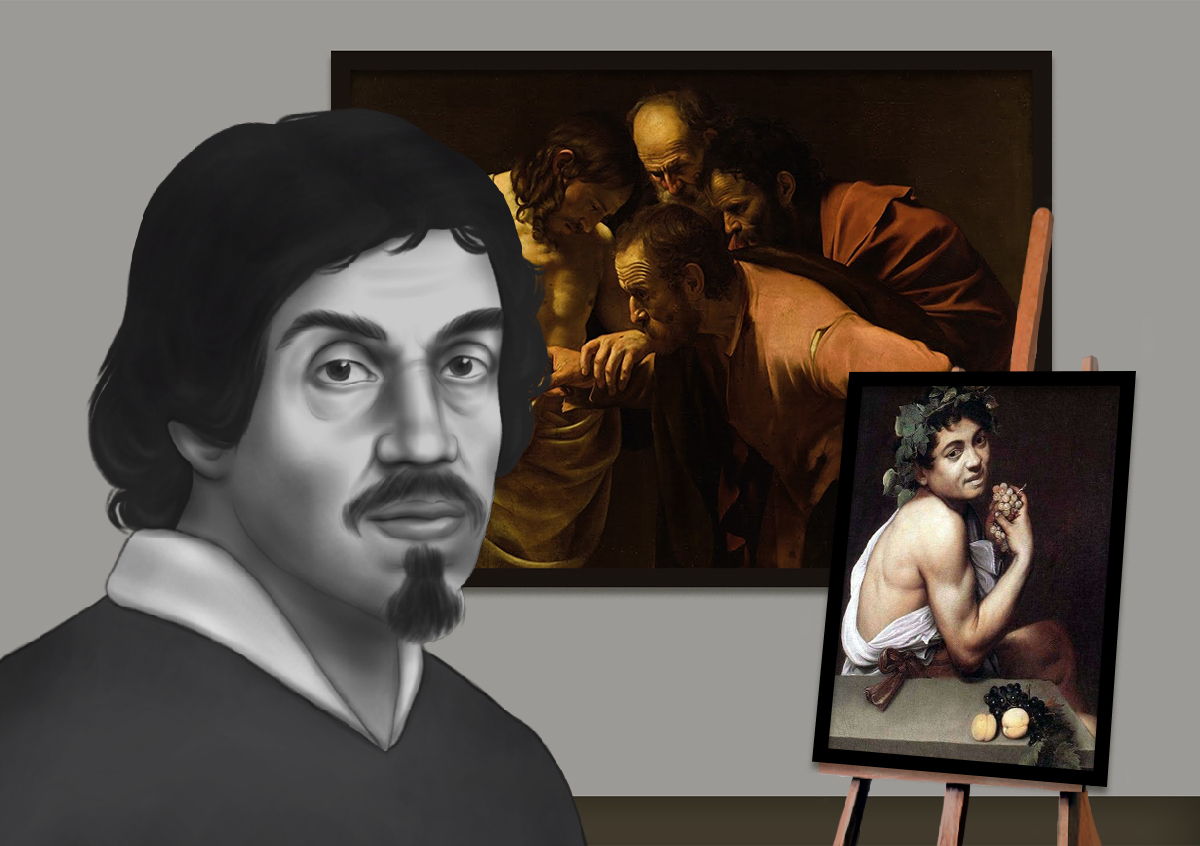
In this painting Caravaggio has portrayed Bacchus as a 17th century Italian teenager- appropriate in any time period. Young Sick Bacchus (1593) is thought to be based on Caravaggio's own image.īacchus (Dionysus in the Roman world) was the Greek god of wine, madness and ecstasy.

She was a well known courtesan whose body had been found floating in a river.Ĭaravaggio also often included himself in the paintings using his own experiences to help achieve a reality not seen before in art. The Church Officials were shocked when they recognised the model Caravaggio had used for the Virgin Mary. So we will first look at Caravaggio and then move onto learning a little more about the importance of light in a painting. Male Voiceover: But he'llĮmbrace only his reflection, which is, of course, intangible.I had decided that our next Blog would be about Light and J's Blog on Mattia Preti and the link with the style of Caravaggio has provided the perfect segue. Female Voiceover: Right, it's almost like he's reaching out to embrace himself he's fallen in love He seems to be so absent-minded, so taken with his own image, that he seems not to realize that he'sĪbout to support himself where he can't on the water.

What seems to be happening is his right hand, on the left side, seems to be firmly planted on the ground. To look at his left hand on the right side of the canvas. Realism, where in reality, the thing that you might look at, or the thing that light falls on in not necessarily the most You'd think he should draw our attention to, Often draws our attention not to the thing that Male Voiceover: AndĪlso, the short sleeve. Space of the viewer are here and that tenebroso, that dark background, that really makes us focus on the figure that fills the shape of the canvas. Of those very Baroque elements of really moving into the Himself leans out towards us with a kind of longing, all Way it's so close to us, thus the way that the figure So, the other thing that interests me is the foreshortening, the Reflection of the real figure and painting, itself, is a reflection. Female Voiceover: As the painter had to thinkĪbout how he was painting the so-called reality, real figure, versus the so-called Male Voiceover: But it seems to me, yeah absolutely, to be a kind of metaphor, or a kind of meditation,įemale Voiceover: On painting. Female Voiceover: A kind of circular form inscribed within that Or the edge of the water is almost dividing theĬanvas exactly in half, not quite, but close,Ĭreating this continuity between the hands thatĪre touching and the arms. Look at this painting that the reflection, in the sense, the painting within the painting is a dimmer image.įemale Voiceover: Much dimmer. Of creating a faithfulness, and the dangers that are inherent in that. Male Voiceover: They certainly are, and the idea of theĪrtist's responsibility in terms of depiction, in terms Of course, paintings themselves are kinds of mirrors, or Interesting because you get the reality of the figure,Īnd then the reflection. It's an extraordinarily interesting subject for a painter. Female Voiceover: About what's important, and what's not important. The flower is named after him, as is the word narcissism.

His own reflection in the water, so much so that he falls in and drowns. Is a story from Ovid of a boy who falls in love with In the Palazzo Barbarini, looking at beautiful paintingīy Caravaggio of Narcissus. (lighthearted music) Female Voiceover: We're


 0 kommentar(er)
0 kommentar(er)
